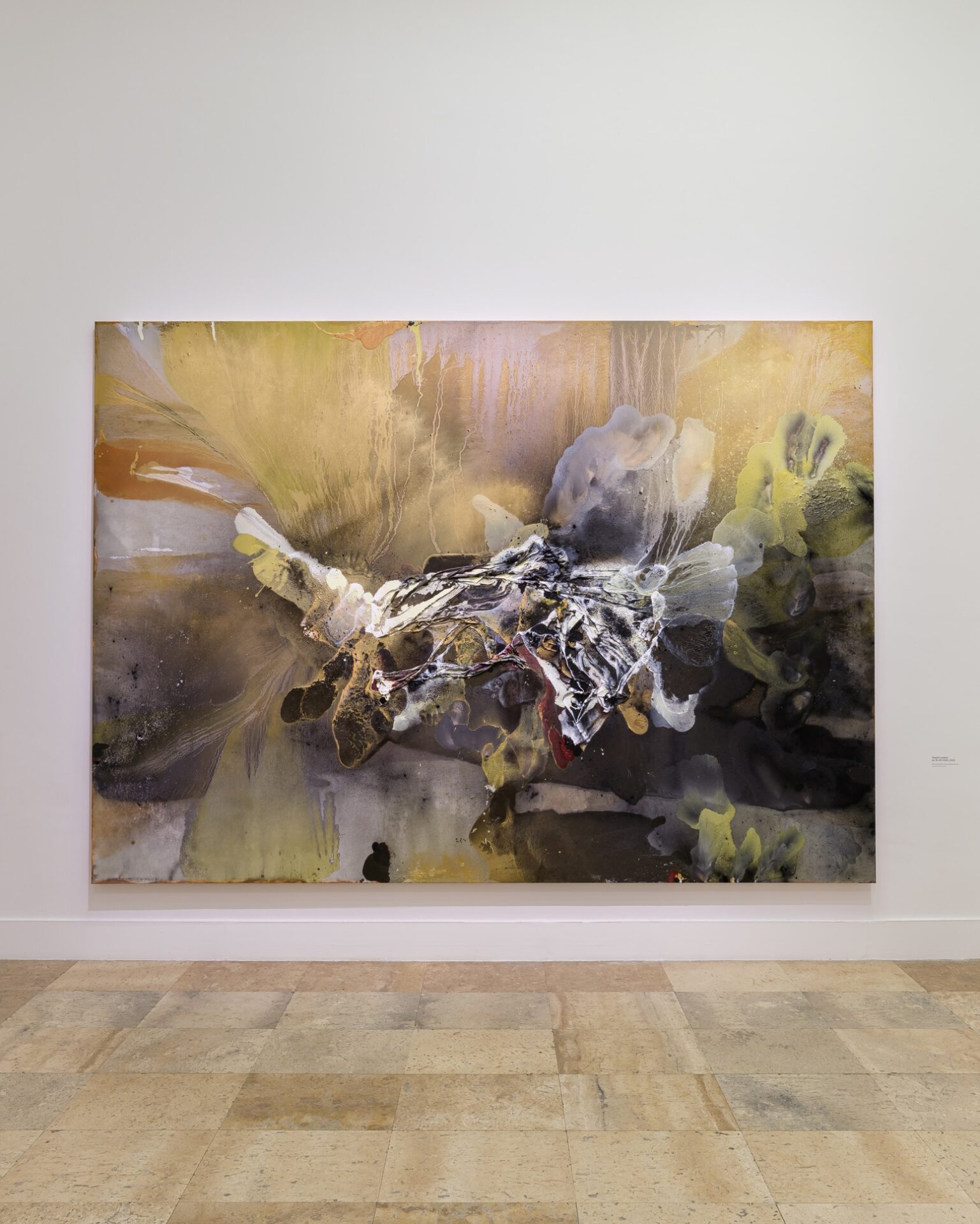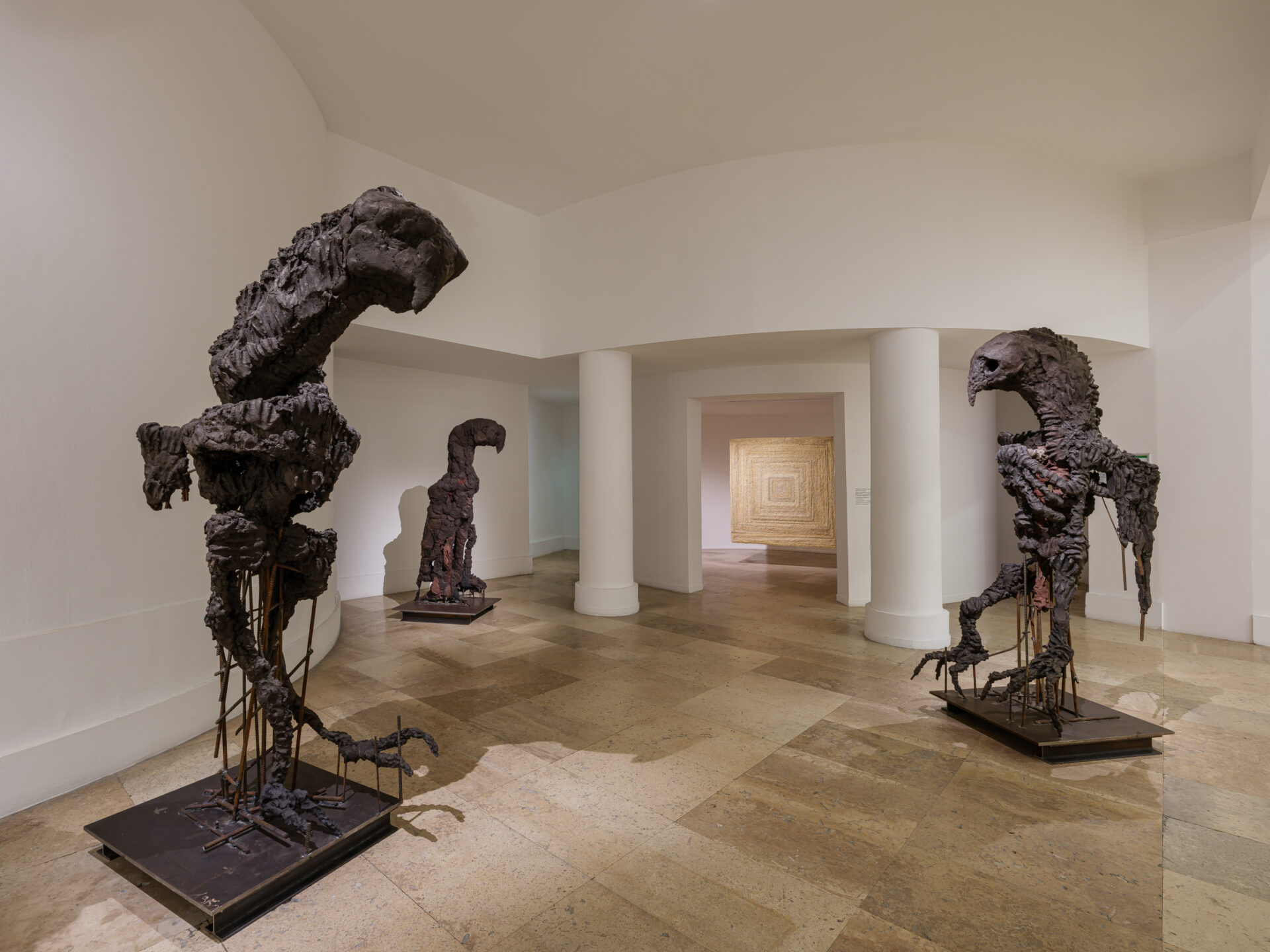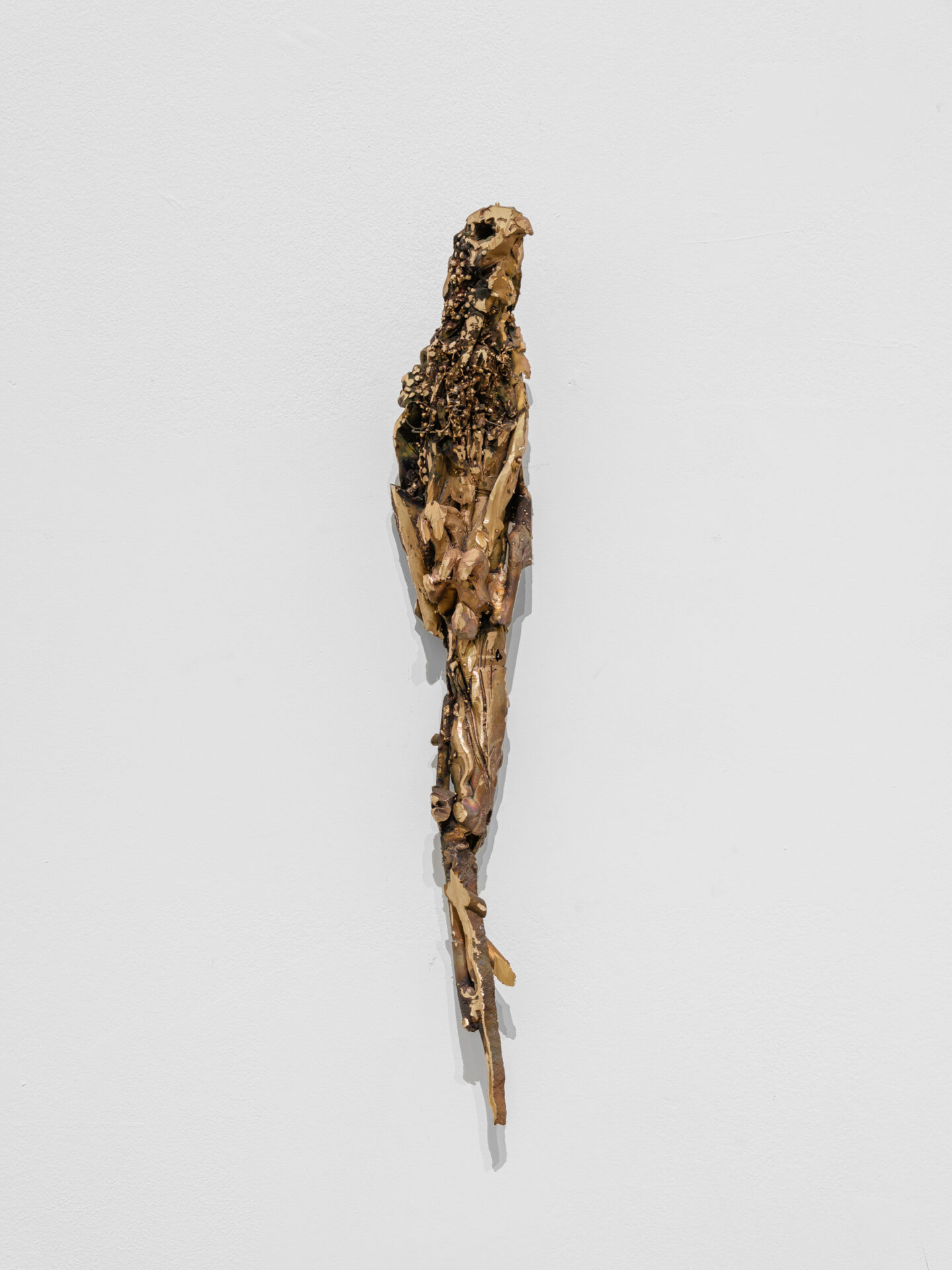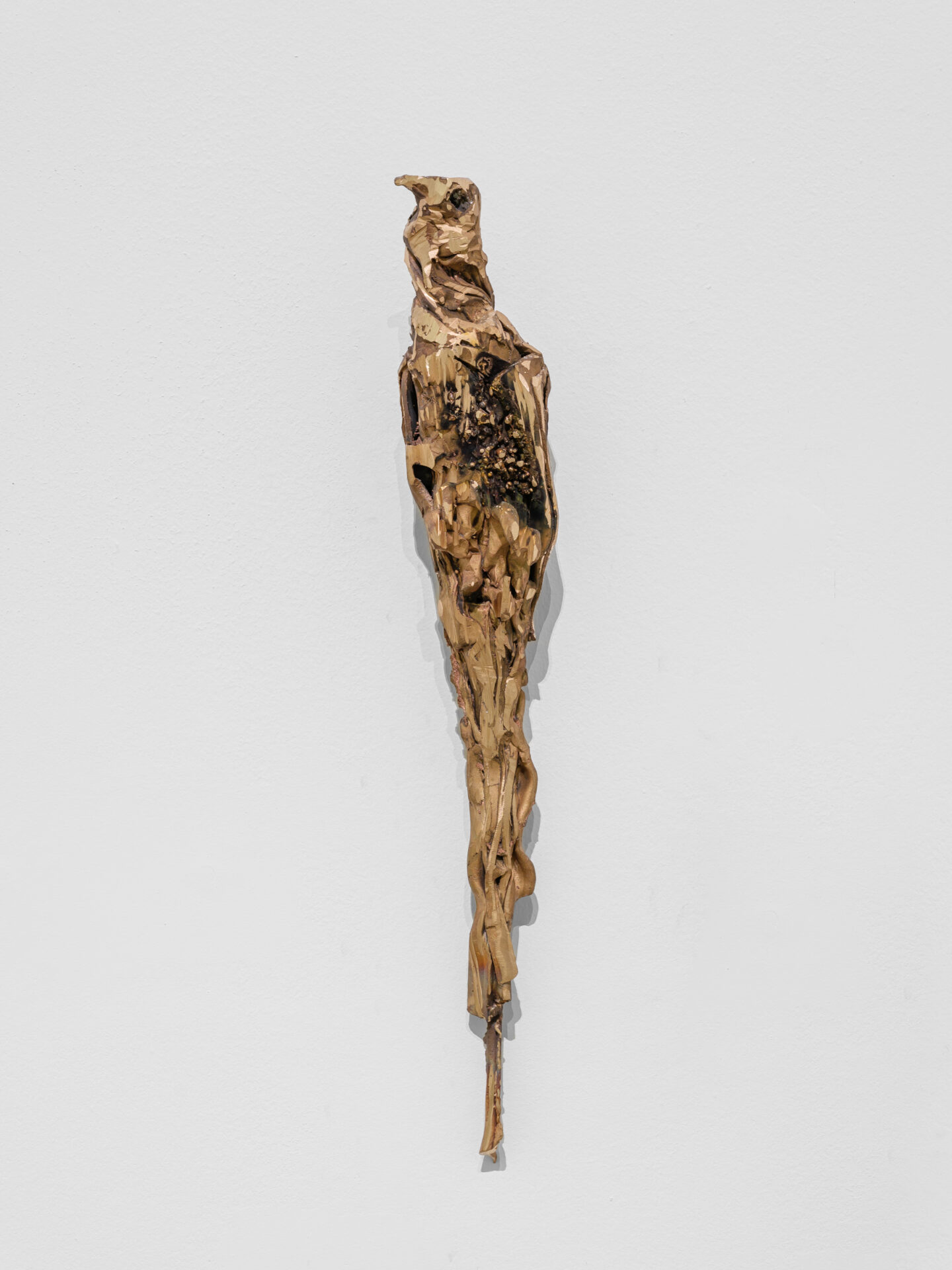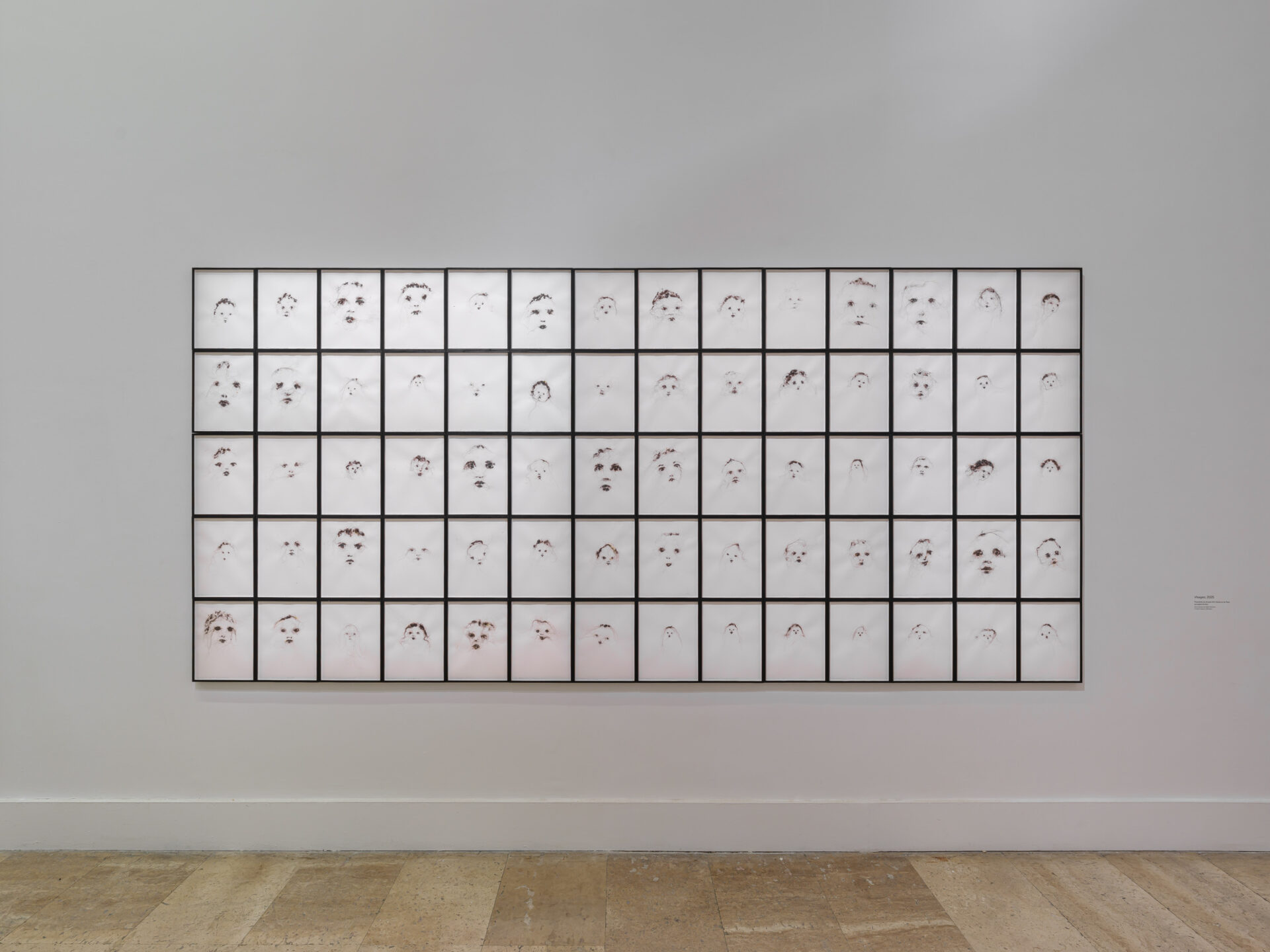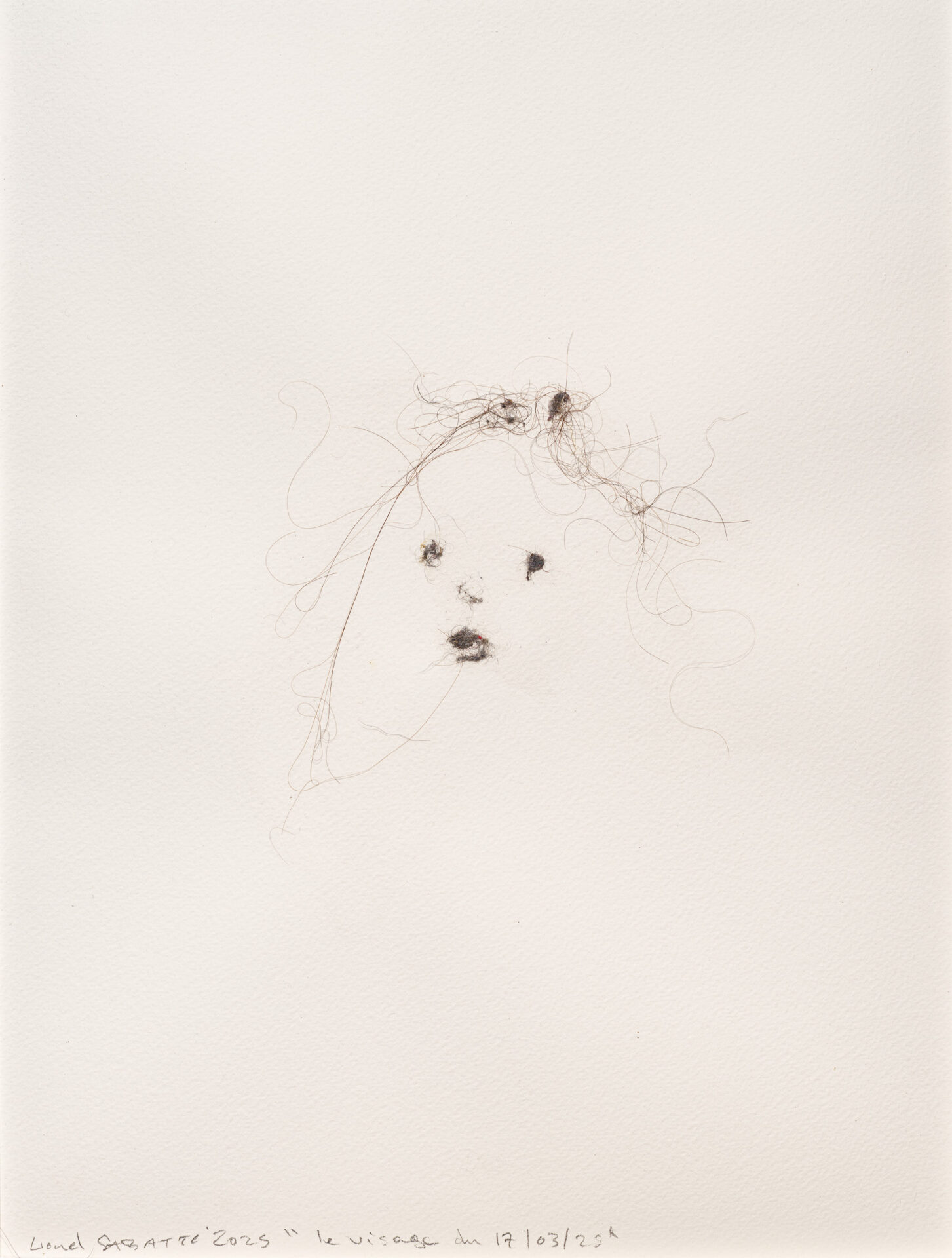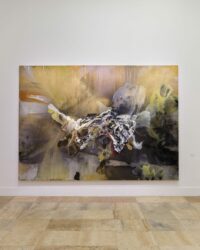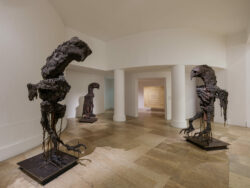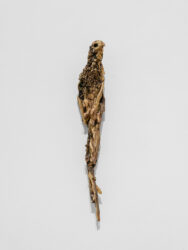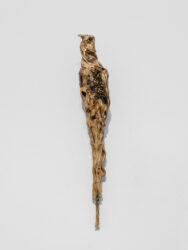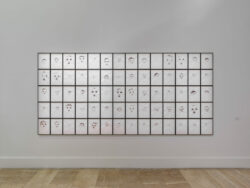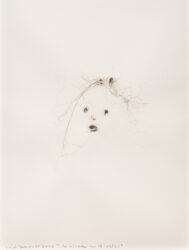MOVING INTERFACES
For more than twenty years, Lionel Sabatté (born in 1975 in Toulouse, France) has been interested in the impact of time on the mineral, organic, and animal worlds, exploring the flow of energy between the exterior and interior of a body. Through chemical reactions, particularly oxidation, on unusual materials, he makes visible and sublime what is usually invisible.
Continuing his bestiary of hybrid figures, the artist uses pozzolan, a porous volcanic rock powder, to shape prehistoric, blind creatures that, like the Phoenix, are reborn from their ashes. His monumental paintings, combining silk fabric and various dilutions of liquids, evoke landscapes from another planet. They weave a dialectic between the ephemeral and the timeless, the living and the inert. The bronze-sculpted birds, entitled Inséparables solitaires (Lonely Lovebirds), break free from their earthly moorings to take flight together.
The work Le Tissu, created from dead skin collected from podiatrists, brings together countless fragments from different bodies into a single entity. As skin is the sensitive membrane that connects us to the world, the work straddles the boundary between the self and the other. Similarly, the faces created from dust (hair, clothing fibers, etc.) collected by the artist in the corridors of the Museum of Modern Art contain thousands of DNA fragments that chance has brought together to form a unified body.
Text by Julia Garimorth and Jean-Pierre Criqui
